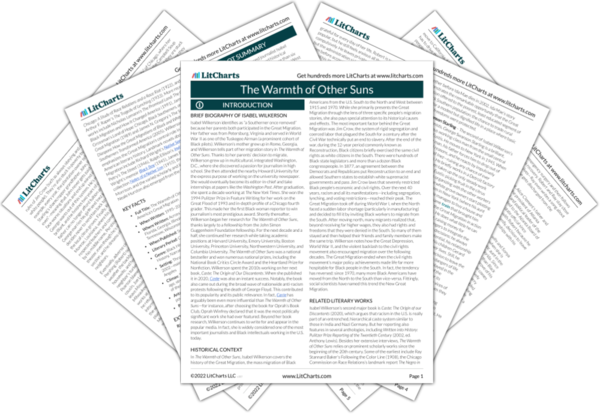Morehouse opens significant doors for Pershing, both personally and professionally. Most importantly, his relationship with Alice catapults him directly into the nation’s Black elite. Yet, whereas Northern Black elites like DuBois believed in fighting for political equality, Southern ones like Dr. Clement believed in working hard to create strong, independent Black institutions at home in the South. This conflict resembles the dilemma that faced migrants: whether to seek new opportunities in the North or make the best of their limited ones at home in the South.
